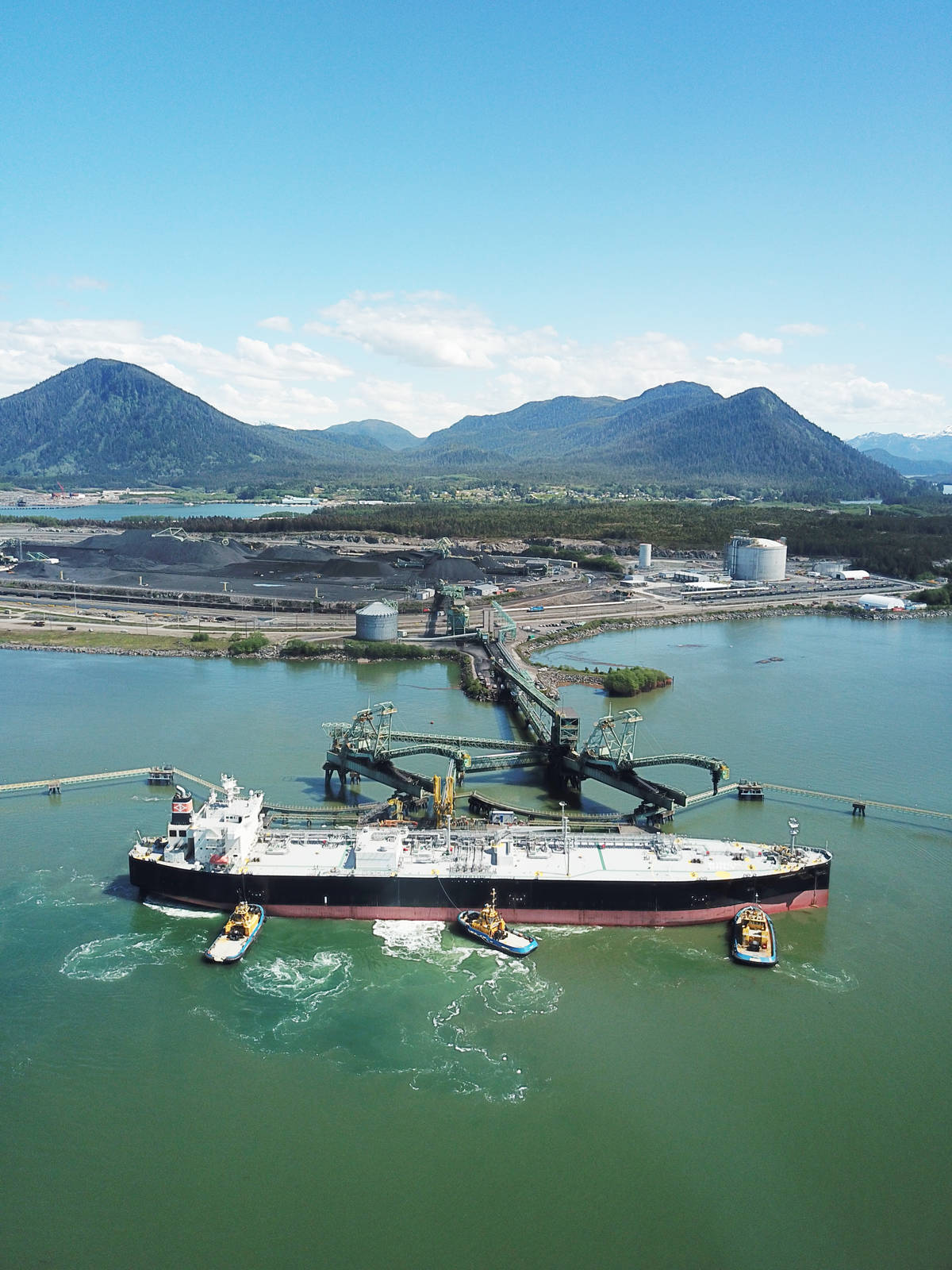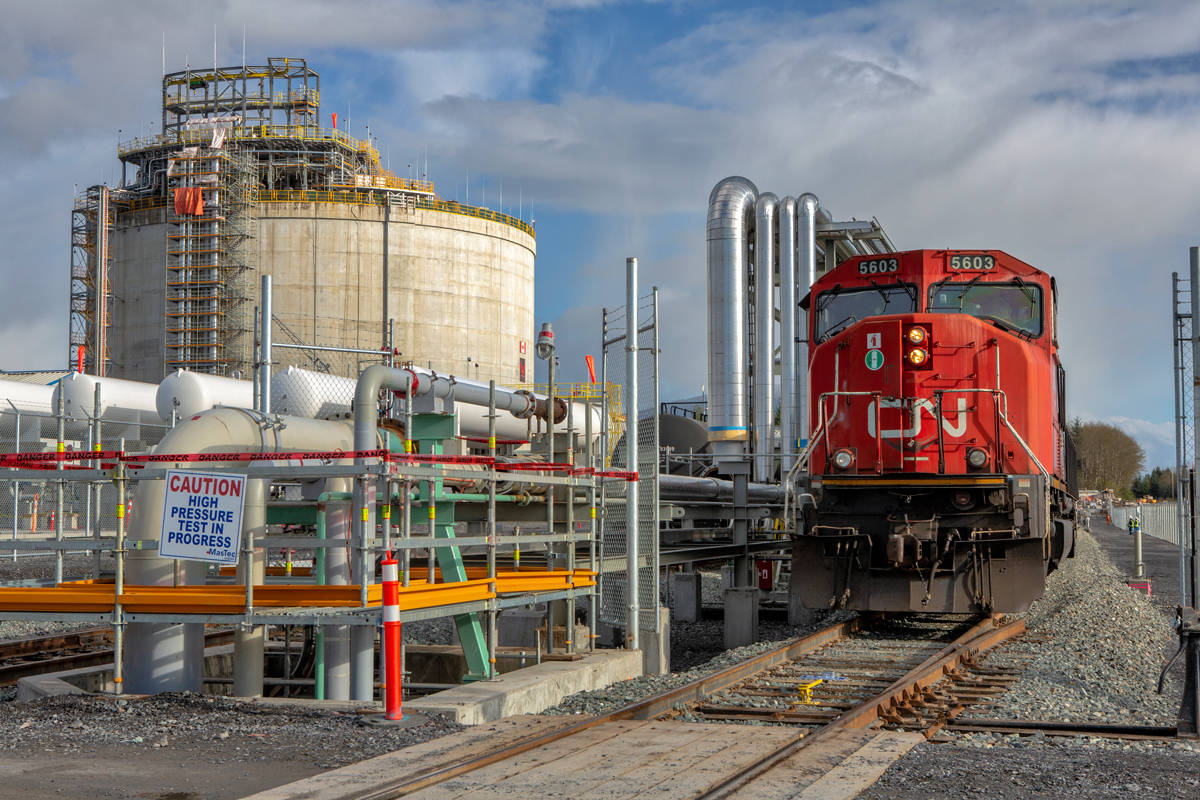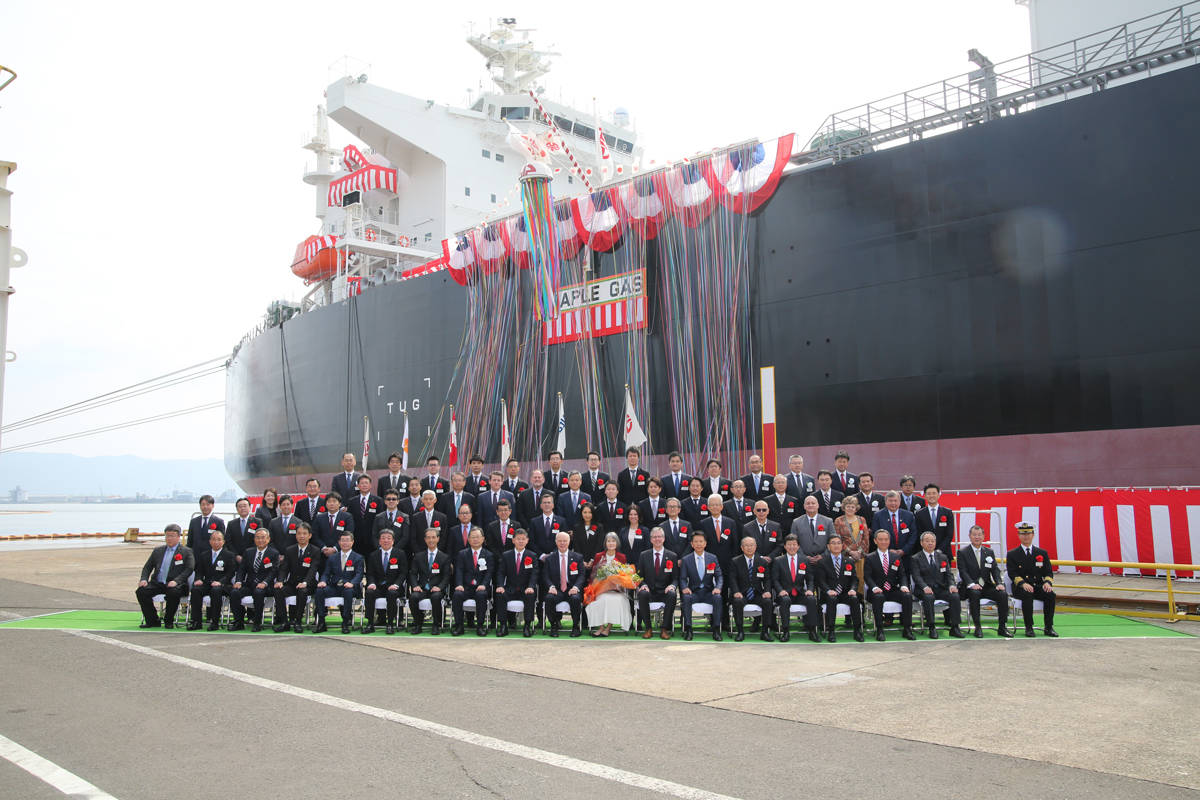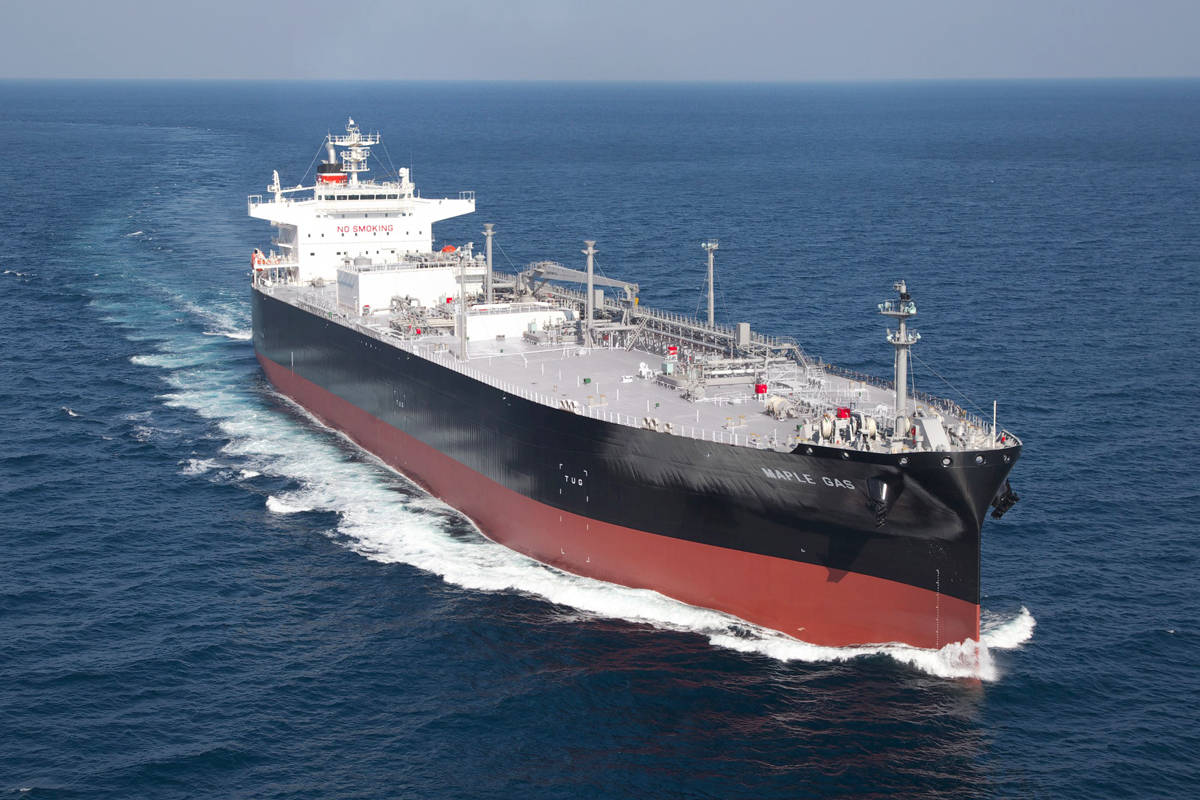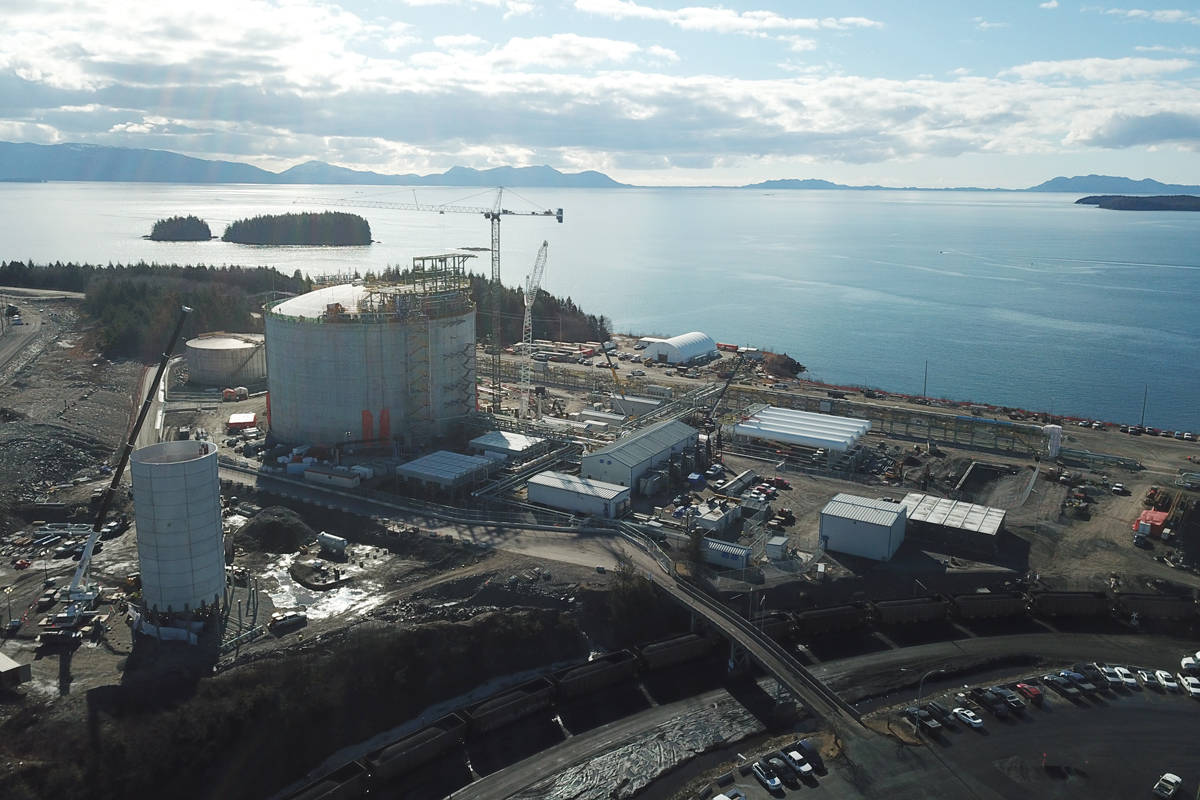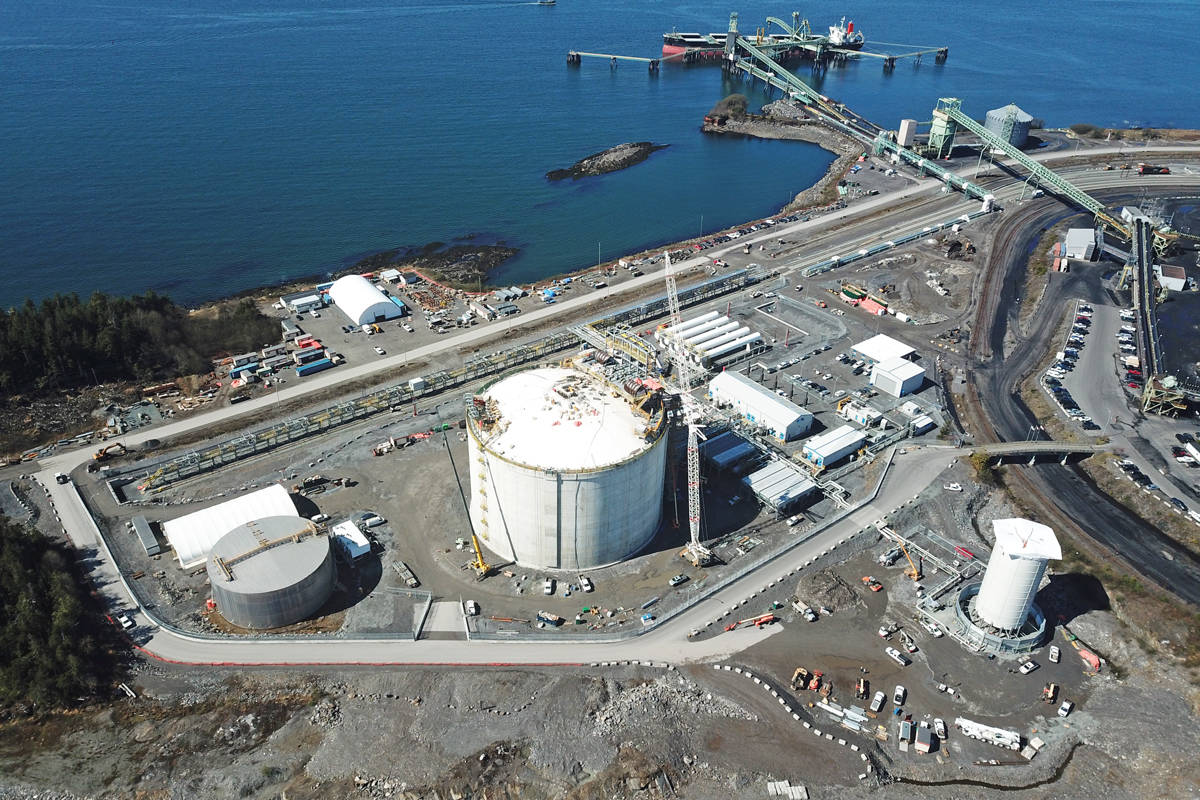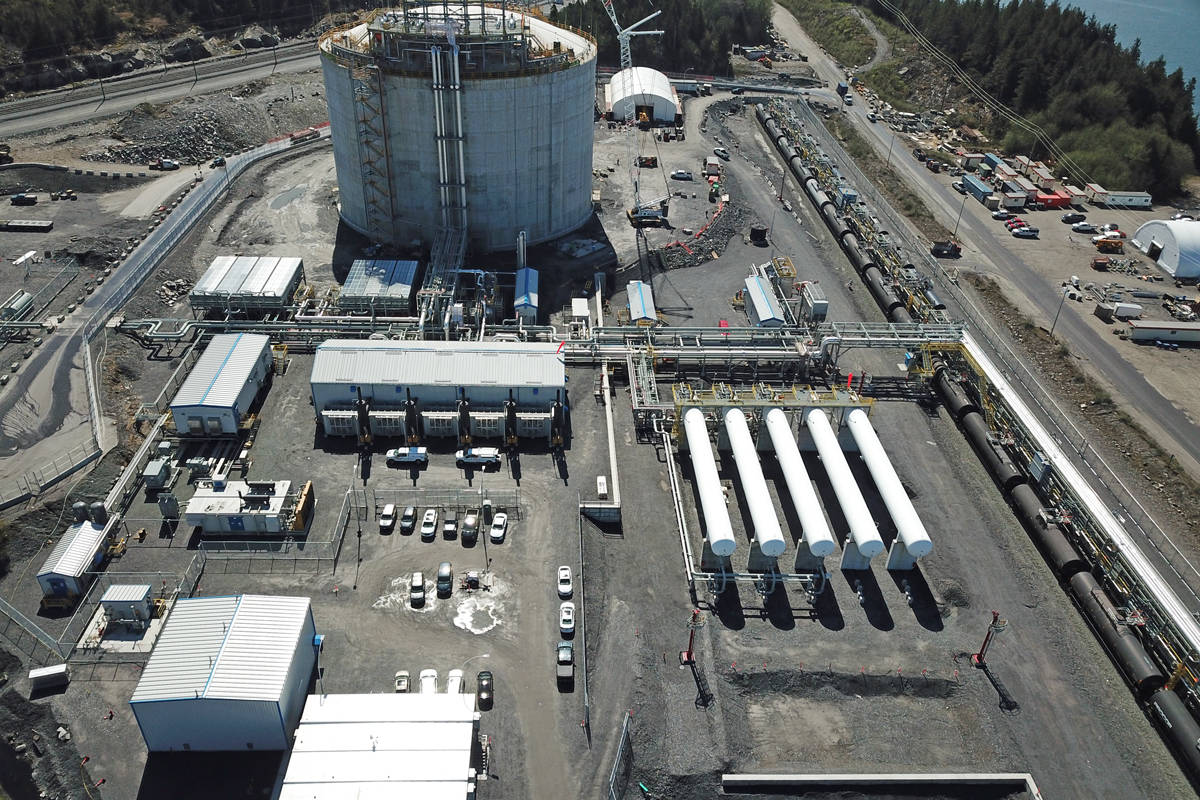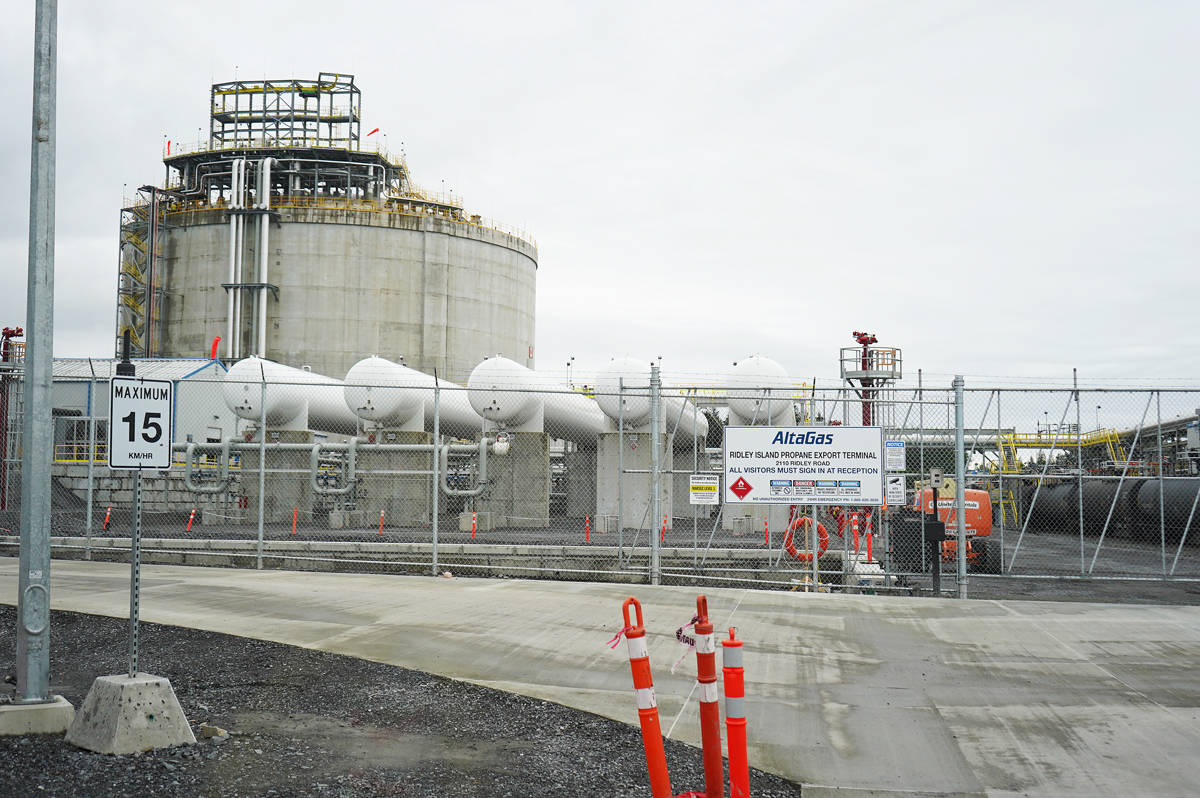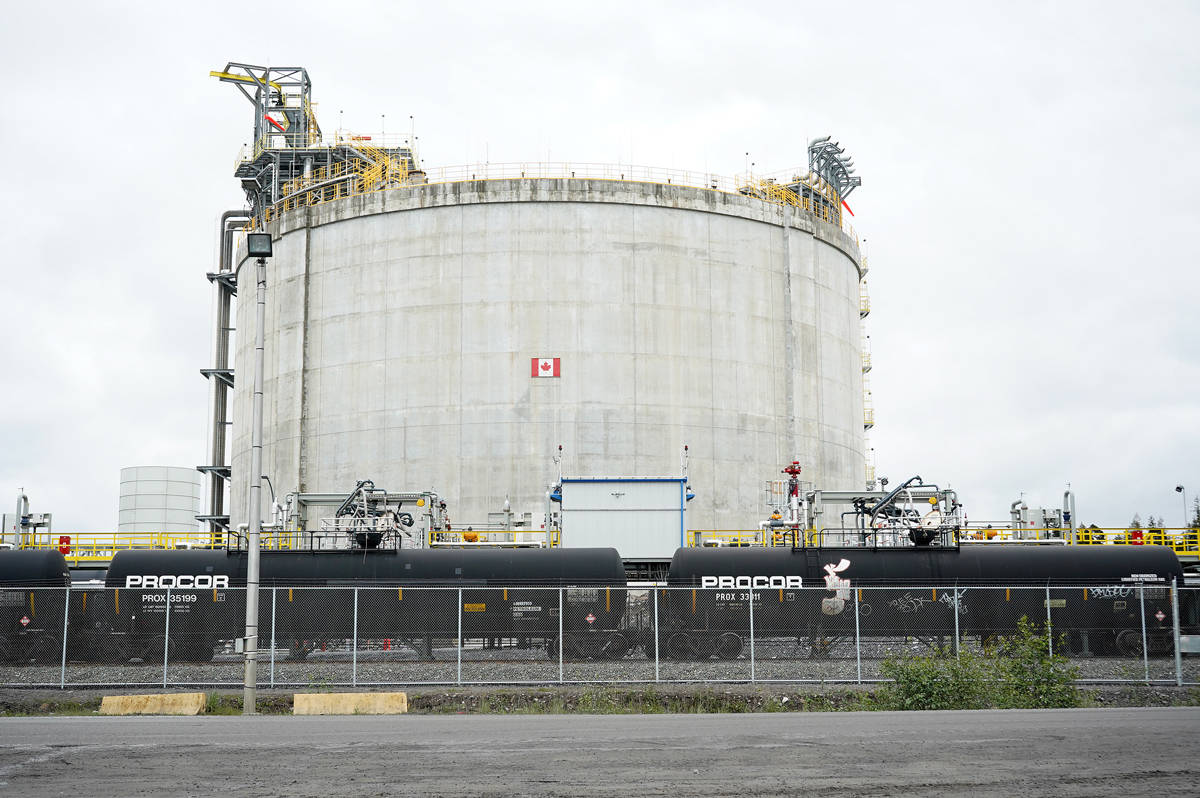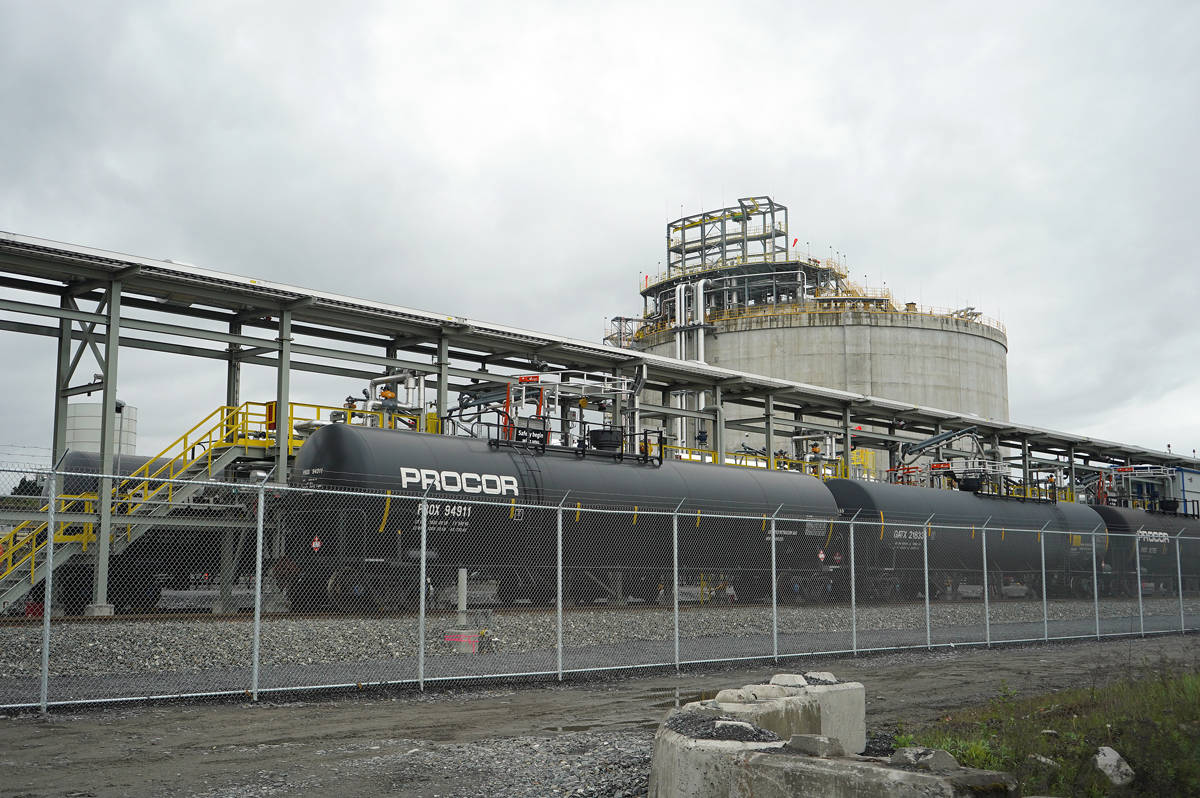“This is one of the better views we’ll get of the facility,” said Paul Desilets, AltaGas’ environment, health and safety advisor at the Ridley Island Propane Export Terminal, or RIPET. “That building you see there is the offloading compressor building and the fans do run. They’re fans that we use to cool propane inside the tank and they can be a little loud. I don’t think your microphones would pick them up if you stepped outside.”
On May 23, a small group of journalists, clutching cameras and microphones, sit inside a shuttle bus parked outside the new AltaGas terminal on Ridley Island to witness what would be the first liquid propane gas (LPG) shipment from the west coast of Canada.
READ MORE: AltaGas operator program celebrates graduating class
When the bus first drove onto the industrial island, it passed the grain terminal, the coal terminal, and the loading dock where the very large gas carrier (VLGC) Sumire Gas was preparing to leave for Japan.
Desilets shares a story on the tour about the precarious moment when the long propane storage bullets were transported to the North Coast on the bed of a truck, and the crew had to navigate the narrow rocky section of Highway 16 between Prince Rupert and Terrace dubbed by locals as ‘car wash rock.’
“There’s a big rock that overhangs and they had said that it was quite difficult to get the bullets around it, and they had to do a bit of engineering to ship the bullets and actually get them down here. Those bullets are the first stop propane makes after it leaves the rail cars and all it does is it regulates the flow of propane into our facility,” Desilets said.
READ MORE: AltaGas signs major deal with Japan propane giant
The journalists are given a moment to step outside the bus where the full operation can be seen starting from the rail cars, to the whites bullets that temporarily store the gas, then over to the refrigeration unit where the propane is chilled to -42C, to the pipes that move the liquefied gas into the giant refrigerated storage tank where it’s later transferred to a VLGC vessel in the Ridley Terminal berth.
Construction kicked off in April 2017 after approximately two years of community engagement, acquiring all the permitting and environmental assessments.
“It’s been quite something in the making, and it’s going to be Canada’s first propane export facility so it’s a huge step forward for us at AltaGas and a bigger step forward for Canada as a whole and the community and Prince Rupert,” said Dan Woznow, senior vice president of energy exports at AltaGas.
Alta Gas Ltd. is a North American energy company that is building out its midstream services, which involves using CN Rail to transport propane from its gas plant in the Montney Region, northeast B.C., to its terminal on Ridley Island, just 10km outside the city of Prince Rupert.
“Without question, RIPET is the cornerstone asset of AltaGas integrated value chain and of our midstream strategy overall,” said Randall Crawford, president and CEO of AltaGas in a May 2 meeting on the company’s quarterly earnings report.
The location on Ridley Island is strategic for the company, as it only takes approximately 10 days to ship the product to Japan, the largest importer of North American propane. In comparison, it takes 25 days to ship propane from export terminals on the U.S. Gulf Coast.
Along the tour, members of the media were allowed to step off the bus three times to take photos and video from outside the fenced-off facility. They stopped by the large fire water tank that was salvaged from the sulphur facility that had been there before AltaGas. But the first shipment aboard Sumire Gas was seen only as we drove by it, moments before its departure.
READ MORE: Premier tours Canada’s first West Coast propane terminal in the making
The RIPET project was on time and within the $450-$500 million projected budget. With the facility fully operational residents from Port Edward will start to notice an average of 50-60 rail cars of propane moving through the community most days. There will be an average of two LPG vessels arriving a month to receive the product, which will total approximately 1.2 million tonnes of propane a year.
“The increasing demand for cleaner energy in overseas Asian markets, positions our RIPET asset as a high value option for Canadian producers resulting growth opportunities along our integrated value chain are expected to deliver strong cash flows and returns,” Crawford said.
The project may be a boon to shareholders, but it’s also brought employment and additional revenues to the region.
“One of the big things we’ve done here with the RIPET facility is try to hire local as much as possible. We did that with construction by maintaining a workforce of around 60 per cent of the local community,” Woznow said.
When AltaGas was struggling to get operators at the facility they worked with Coast Mountain College to train Indigenous and non-Indigenous residents to acquire the skills necessary to apply for entry-level operating positions at the new terminal once it opened.
READ MORE: AltaGas operator program celebrates graduating class
“Through that program we have 11 graduates after a six month training program and all of them have been hired and are working at the facility now,” he said. The new terminal has created up to 40 permanent jobs.
In 2018, AltaGas paid just over $400,000 in property taxes to the City of Prince Rupert while the terminal was still under construction. With the terminal fully operational, AltaGas expects the municipal tax bill will be higher moving forward.
After Sumire Gas departed for Japan on May 23, a second VLGC vessel, Maple Gas, was en route to the Prince Rupert harbour. The Maple Gas is a brand new vessel that was officially named in Tokyo, Japan in February 2019. AltaGas was at the ceremony, along with the elected leaders from Metlakatla and Lax Kw’alaams, and Astomos Energy Corporation, the company that has agreed to purchase 50 per cent of the propane exported from RIPET.
A second tour of the facility is set for the official grand opening on May 28 when politicians, Indigenous leaders and project partners are scheduled to be in Prince Rupert and for the Maple Gas’ inaugural visit to the harbour.
READ MORE: CN and AltaGas host emergency response drill
To report a typo, email: editor@thenorthernview.com.
<>Shannon Lough | Editor
Shannon Lough
Send Shannon email
Like the The Northern View on Facebook
Follow us on Twitter
